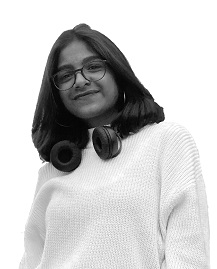Nishita Ravuri
 ORCID ID: 0000-0001-6564-2475
ORCID ID: 0000-0001-6564-2475
Research Project Title: Design & Applications of Air-breathing Propulsion System for Very Low and Super Low Earth Orbit Satellites
Supervisors/s: Dr. Ashish Vashishtha and Dr. Stephen Scully
Project Funding: Irish Research Council Government of Ireland Postgraduate Scholarship
- Biography
- Research Project Description
- Publications and Outputs
Biography
Hi, I’m Nishita, a postgraduate student at the Department of Aerospace and Mechanical Engineering, SETU, Carlow Campus, Ireland. I’m pursuing a Research Master’s program here through IRC’s Government of Ireland Postgraduate Scholarship Award.
I graduated top of the class with a Bachelor of Technology in Aerospace Engineering from MIT-ADT University, Maharashtra, India, in the year 2022, and have been part of EngCORE at SETU Carlow since then. My career interests lie in Engineering Design, Aerodynamics and Computational Fluid Dynamics, and I hope to continue my research career and pursue a PhD in these core areas.
My project at SETU Carlow involves exploring and analysing aerodynamic design concepts of air-breathing propulsion system intakes for satellites in rarefied environments using open-source computational fluid dynamics software programs.
Research Project Description
As of 2021, more than 80% of the total number of launched satellites are in the Low-Earth Orbits, and find extensive applications in Earth Observation, Communications, Marine/Ocean Monitoring, Remote-sensing, and Navigation among others.
Recently, Very-Low and Super-Low Earth Orbits have been gaining interest because they can provide the same benefits, if not increased, as Low-Earth Orbits. However, these orbits also pose some added challenges due to the low-density atmosphere, increased exposure atmospheric drag. If carefully designed, near-earth orbit satellites have the potential to provide substantially better performance and efficiencies than LEO satellites, along with reduced launch costs, better end-of-life strategies (like re-entry burn) and lighter payload systems.
The research project aims to explore efficient aerodynamic designs for intakes of air-breathing propulsion system for small satellites in the Very-low and Super-Low Earth Orbits using the Direct Simulation Monte Carlo Technique and the DSMC-SPARTA Solver.
Publications and Outputs
- Shaikh, M., Ravuri, N., Bihani, V., Phalphale, A., Sanghvi, N. and Singh, Y. (2021). Design of a Solar-tracking Mechanism in the EPS of ÆtherSat. [online] IEEE Xplore. doi: https://doi.org/10.1109/PuneCon52575.2021.9686485.
The undergraduate thesis project for this paper involved conceptualising and introducing a novel economical solar-tracking mechanism power system for a 1U student CubeSat called ÆtherSat. The paper proposes feasible, inexpensive and commercially available components for the solar-tracking mechanism with single-axis tracking.
- Phalphale, A., Gaikwad, V., Sharmale, R., Ravuri, N., Bihani, V. and Singh, Y. (2021). Optimal Power Generation and Thermal Analysis for ÆtherSat. [online] IEEE Xplore. doi: https://doi.org/10.1109/PuneCon52575.2021.9686502.
This paper provides a thermal analysis of the 1U student CubeSat ÆtherSat, which consists of a solar-tracking mechanism in its Electrical and Power System, and discusses the orbital mechanics, parameters and thermal conditions of the satellite.
- Ravuri, N (Presenter), (2023). Unsteady DSMC Simulation of Blunt-nose with spike at Hypersonic Rarefied Flows, 57th 3AF International Conference on Applied Aerodynamics (AERO2023), 29-31 March 2023, Bordeaux, France
The paper presented at the AERO2023 Conference, France, aims to study and analyse the unsteady behaviour observed in high speed non-continuum flow regimes on a forward-facing spiked geometry. The paper also compares how the geometries affect the fluctuations in various output parameters for continuum and non-continuum regimes.








